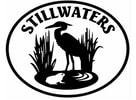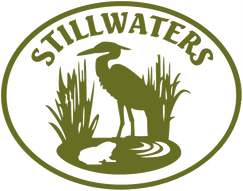Estuaries
We may often confuse estuaries with tributaries (the smaller streams that combine and make or add to a larger river), but they are fairly distinct. Estuaries are more specifically classified as bodies of water that sit between freshwater bodies and saltwater bodies, like between a bay and a river. Because of this, they have mixed amounts of salinity (saltiness) in the water, changing based on the tides, waves, and activity of the river, and can be very different in certain parts of the estuary even at the same time. This means that a mixed bag of species can survive here: some species that like the salty ocean water, some that prey on the fish that live in the ocean, and some that need a little freshwater every now and then.
A massive percentage of the world’s population live near or along estuaries (and the coast as well), just below 2/3 of all people. Impacts on estuaries because of the human activity include soil erosion, degradation of the banks, and even pollution. Estuaries are fun to play in and around since they often have the beach like an ocean does but don’t have the waves coming in to mess up a sand castle. If you decide to visit one, though, try to take care of the estuary. At a certain point upstream, there will likely be a defined or obvious riverbank: try not to tear this down. Enough bank loss and the way the ecosystem works could change.
Since estuaries are so dynamic and varied, they house a huge number of different species and are known for high productivity. The sediment and soil are nutrient rich since they have a mix of nutrients brought up by the waves as well as nutrients brought by the flow of the river. They are also important areas for many species of fish, including salmon, that are born in rivers and streams, make their way to the ocean for the middle portion of their lives, and then head back up rivers to lay eggs.
A massive percentage of the world’s population live near or along estuaries (and the coast as well), just below 2/3 of all people. Impacts on estuaries because of the human activity include soil erosion, degradation of the banks, and even pollution. Estuaries are fun to play in and around since they often have the beach like an ocean does but don’t have the waves coming in to mess up a sand castle. If you decide to visit one, though, try to take care of the estuary. At a certain point upstream, there will likely be a defined or obvious riverbank: try not to tear this down. Enough bank loss and the way the ecosystem works could change.
Since estuaries are so dynamic and varied, they house a huge number of different species and are known for high productivity. The sediment and soil are nutrient rich since they have a mix of nutrients brought up by the waves as well as nutrients brought by the flow of the river. They are also important areas for many species of fish, including salmon, that are born in rivers and streams, make their way to the ocean for the middle portion of their lives, and then head back up rivers to lay eggs.

